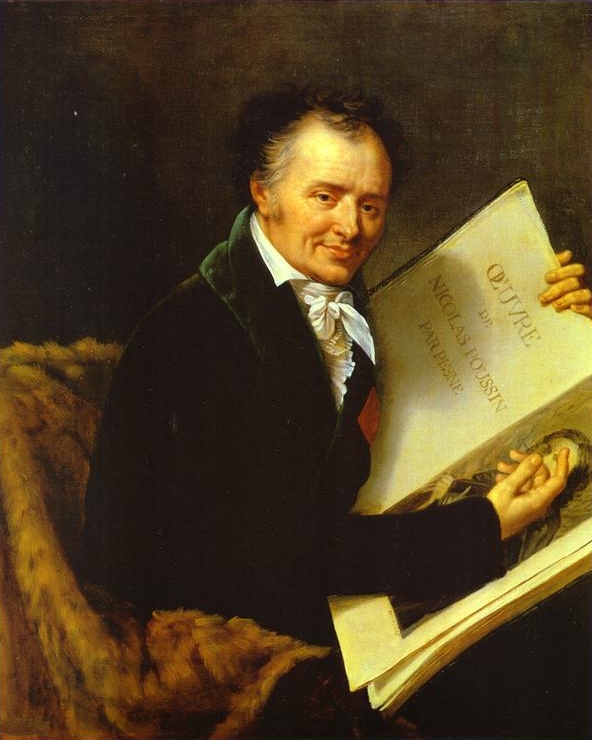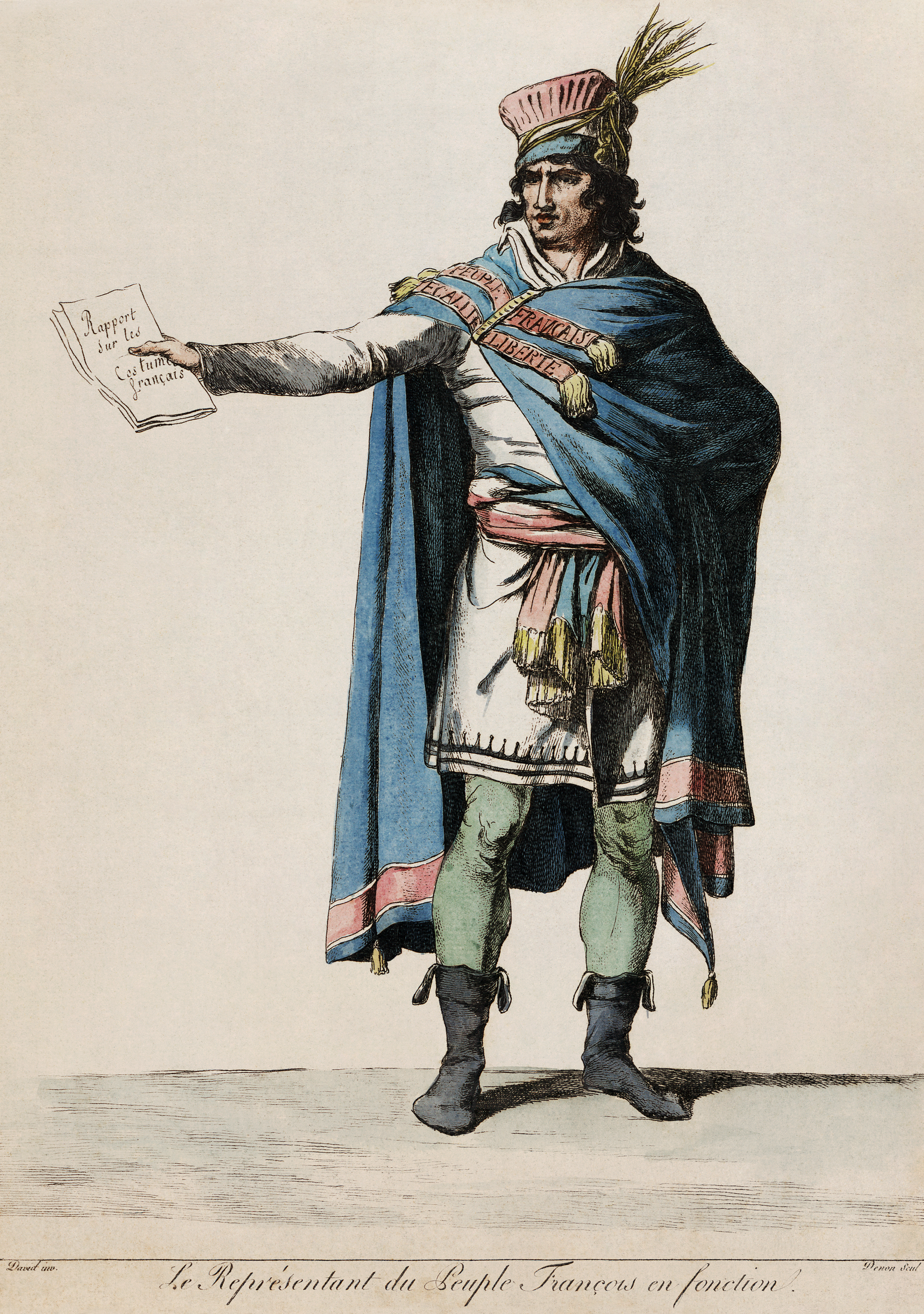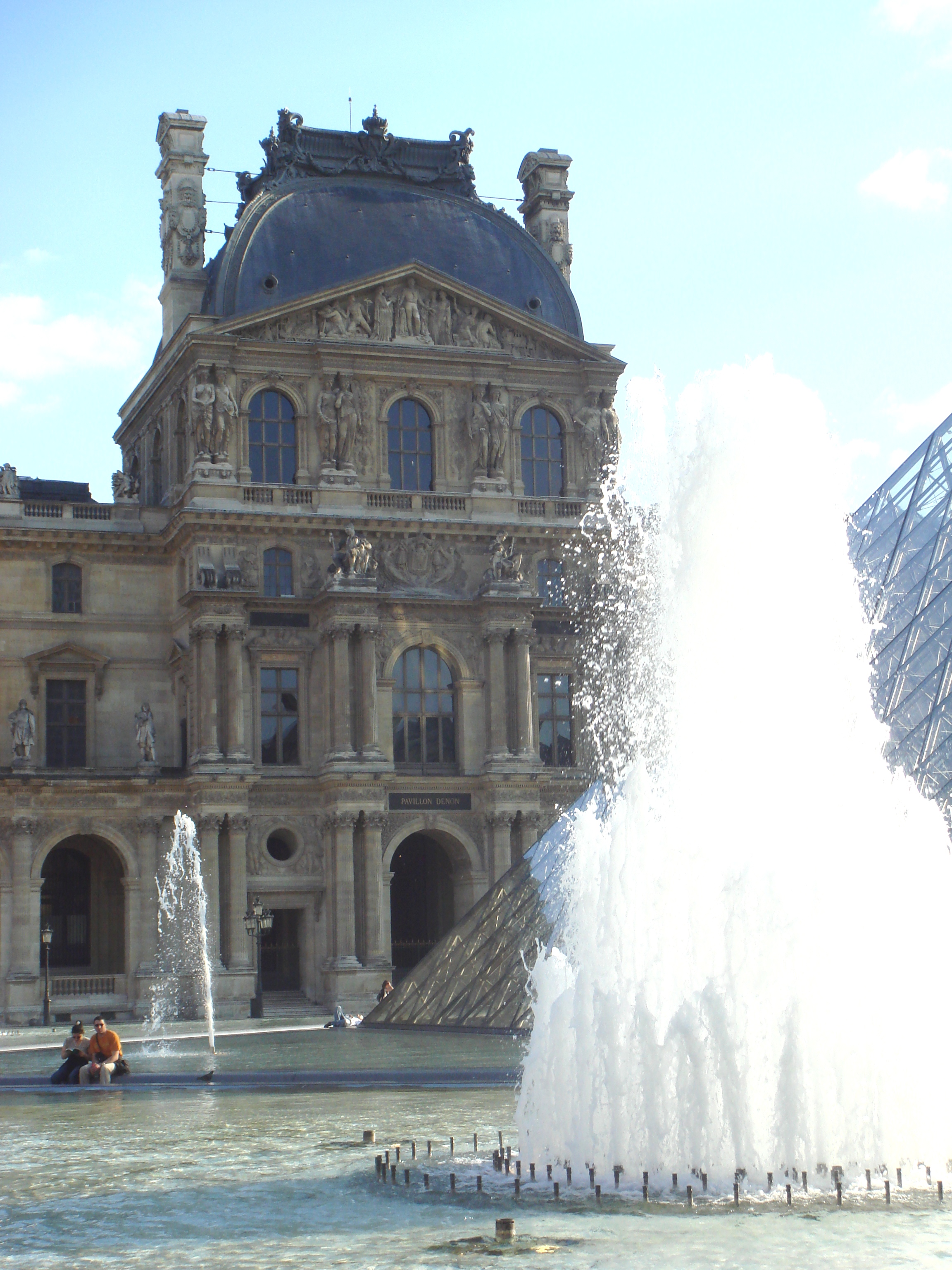Vivant Denon on:
[Wikipedia]
[Google]
[Amazon]
Dominique Vivant, Baron Denon (4 January 1747 – 27 April 1825) was a French artist, writer,
 Vivant Denon was born in Givry, near
Vivant Denon was born in Givry, near
 On the accession of Louis XVI, Denon was transferred to Sweden; but he returned, after a brief interval, to Paris with the ambassador M. de Vergennes, who had been appointed foreign minister. In 1775 Denon was sent on a secret mission to Switzerland, and took the opportunity of visiting Voltaire at Ferney. He made a portrait of the philosopher, which was engraved and published on his return to Paris. His next diplomatic appointment was to Naples, where he spent seven years, first as secretary to the embassy and afterwards as ''
On the accession of Louis XVI, Denon was transferred to Sweden; but he returned, after a brief interval, to Paris with the ambassador M. de Vergennes, who had been appointed foreign minister. In 1775 Denon was sent on a secret mission to Switzerland, and took the opportunity of visiting Voltaire at Ferney. He made a portrait of the philosopher, which was engraved and published on his return to Paris. His next diplomatic appointment was to Naples, where he spent seven years, first as secretary to the embassy and afterwards as ''
 At Bonaparte's invitation he joined the expedition to Egypt as part of the arts and literature section of the Institut d'Égypte, and thus found the opportunity of gathering the materials for his most important literary and artistic work. He accompanied
At Bonaparte's invitation he joined the expedition to Egypt as part of the arts and literature section of the Institut d'Égypte, and thus found the opportunity of gathering the materials for his most important literary and artistic work. He accompanied  On 19 November 1802, he was appointed by Napoleon to the important office of director-general of museums and head of the new
On 19 November 1802, he was appointed by Napoleon to the important office of director-general of museums and head of the new
 At the
At the
The Louvre Dominique-Vivant Denon Research Centre
{{DEFAULTSORT:Denon, Vivant 1747 births 1825 deaths People from Saône-et-Loire French archaeologists French Egyptologists French barons Burials at Père Lachaise Cemetery Directors of the Louvre Commission des Sciences et des Arts members Members of the Académie des beaux-arts
diplomat
A diplomat (from grc, δίπλωμα; romanized ''diploma'') is a person appointed by a state or an intergovernmental institution such as the United Nations or the European Union to conduct diplomacy with one or more other states or internati ...
, author, and archaeologist
Archaeology or archeology is the scientific study of human activity through the recovery and analysis of material culture. The archaeological record consists of artifacts, architecture, biofacts or ecofacts, sites, and cultural landscap ...
. Denon was a diplomat for France under Louis XV and Louis XVI. He was appointed as the first Director of the Louvre museum by Napoleon
Napoleon Bonaparte ; it, Napoleone Bonaparte, ; co, Napulione Buonaparte. (born Napoleone Buonaparte; 15 August 1769 – 5 May 1821), later known by his regnal name Napoleon I, was a French military commander and political leader who ...
after the Egyptian campaign of 1798–1801, and is commemorated in the Denon Wing of the modern museum and in the Dominique-Vivant Denon Research Center. His two-volume ''Voyage dans la basse et la haute Egypte'' ("Journey in Lower and Upper Egypt"), 1802, was foundational for modern Egyptology.
Birth and name
 Vivant Denon was born in Givry, near
Vivant Denon was born in Givry, near Chalon-sur-Saône
Chalon-sur-Saône (, literally ''Chalon on Saône'') is a city in the Saône-et-Loire department in the region of Bourgogne-Franche-Comté in eastern France.
It is a sub-prefecture of the department. It is the largest city in the department; h ...
to a family called "de Non", of the "petite noblesse" or gentry, and until the French Revolution signed himself as "le chevalier de Non". Like many of the nobility, he revised his surname at the Revolution to lose the "nobiliary particle
A nobiliary particle is used in a surname or family name in many Western cultures to signal the nobility of a family. The particle used varies depending on the country, language and period of time. In some languages, it is the same as a regular p ...
" "de". He seems to have consistently avoided using his baptised first name "Dominique", preferring his middle name "Vivant", and so is usually known as "Vivant Denon". He was created "Baron Denon" by Napoleon in August 1812, at the age of 65.
Early life
He was sent to Paris to study law, but he showed a decided preference for art and literature, and soon gave up his profession. In his twenty-third year he produced a comedy, ''Le Bon Pére'', which obtained a ''succès d'estime'', as he had already won a position in society by his agreeable manners and exceptional conversational powers. He became a favorite of Louis XV, who entrusted him with the collection and arrangement of a cabinet of medals and antique gems forMadame de Pompadour
Jeanne Antoinette Poisson, Marquise de Pompadour (, ; 29 December 1721 – 15 April 1764), commonly known as Madame de Pompadour, was a member of the French court. She was the official chief mistress of King Louis XV from 1745 to 1751, and rema ...
, and subsequently appointed him '' attaché'' to the French embassy at St. Petersburg.
Diplomatic career
 On the accession of Louis XVI, Denon was transferred to Sweden; but he returned, after a brief interval, to Paris with the ambassador M. de Vergennes, who had been appointed foreign minister. In 1775 Denon was sent on a secret mission to Switzerland, and took the opportunity of visiting Voltaire at Ferney. He made a portrait of the philosopher, which was engraved and published on his return to Paris. His next diplomatic appointment was to Naples, where he spent seven years, first as secretary to the embassy and afterwards as ''
On the accession of Louis XVI, Denon was transferred to Sweden; but he returned, after a brief interval, to Paris with the ambassador M. de Vergennes, who had been appointed foreign minister. In 1775 Denon was sent on a secret mission to Switzerland, and took the opportunity of visiting Voltaire at Ferney. He made a portrait of the philosopher, which was engraved and published on his return to Paris. His next diplomatic appointment was to Naples, where he spent seven years, first as secretary to the embassy and afterwards as ''chargé d'affaires
A ''chargé d'affaires'' (), plural ''chargés d'affaires'', often shortened to ''chargé'' (French) and sometimes in colloquial English to ''charge-D'', is a diplomat who serves as an embassy's chief of mission in the absence of the ambassador ...
''. He devoted this period to a careful study of the monuments of ancient art, collecting many specimens and making drawings of others. He also perfected himself in etching and '' mezzotinto'' engraving. While in Naples he met Sir William and Lady Hamilton and he etched Lady Hamilton 'posing'.
The death of his patron, Charles Gravier, comte de Vergennes, in 1787, led to his recall
Recall may refer to:
* Recall (bugle call), a signal to stop
* Recall (information retrieval), a statistical measure
* ''ReCALL'' (journal), an academic journal about computer-assisted language learning
* Recall (memory)
* ''Recall'' (Overwatch ...
, and the rest of his life was given mainly to artistic pursuits. On his return to Paris he was admitted a member of the Académie royale de peinture et de sculpture
The Académie Royale de Peinture et de Sculpture (; en, "Royal Academy of Painting and Sculpture") was founded in 1648 in Paris, France. It was the premier art institution of France during the latter part of the Ancien Régime until it was abol ...
(1787). After a brief interval he returned to Italy, living chiefly at Venice
Venice ( ; it, Venezia ; vec, Venesia or ) is a city in northeastern Italy and the capital of the Veneto Regions of Italy, region. It is built on a group of 118 small islands that are separated by canals and linked by over 400 ...
. He also visited Florence and Bologna, and afterwards went to Switzerland. While there he heard that his property had been confiscated, and his name placed on the list of the proscribed
Proscription ( la, proscriptio) is, in current usage, a 'decree of condemnation to death or banishment' (''Oxford English Dictionary'') and can be used in a political context to refer to state-approved murder or banishment. The term originated ...
, and with characteristic courage he resolved at once to return to Paris: his situation was critical, but he was spared, thanks to the friendship of the painter Jacques-Louis David
Jacques-Louis David (; 30 August 1748 – 29 December 1825) was a French painter in the Neoclassicism, Neoclassical style, considered to be the preeminent painter of the era. In the 1780s, his cerebral brand of history painting marked a change in ...
, who obtained for him a commission to furnish designs for republican costumes. When the Revolution was over, Denon was one of the bands of eminent men who frequented the house of Joséphine de Beauharnais. Here he met Napoleon
Napoleon Bonaparte ; it, Napoleone Bonaparte, ; co, Napulione Buonaparte. (born Napoleone Buonaparte; 15 August 1769 – 5 May 1821), later known by his regnal name Napoleon I, was a French military commander and political leader who ...
, to whose fortunes he wisely attached himself.
Egypt and the Louvre
 At Bonaparte's invitation he joined the expedition to Egypt as part of the arts and literature section of the Institut d'Égypte, and thus found the opportunity of gathering the materials for his most important literary and artistic work. He accompanied
At Bonaparte's invitation he joined the expedition to Egypt as part of the arts and literature section of the Institut d'Égypte, and thus found the opportunity of gathering the materials for his most important literary and artistic work. He accompanied General Desaix
Louis Charles Antoine Desaix () (17 August 176814 June 1800) was a French general and military leader during the French Revolutionary Wars. According to the usage of the time, he took the name ''Louis Charles Antoine Desaix de Veygoux''. He was c ...
to Upper Egypt, and made numerous sketches of the monuments of ancient art, sometimes under the very fire of the enemy. The results were published in his ''Voyage dans la basse et la haute Egypte'' (''Journey in Lower and Upper Egypt''), published as two volumes in 1802. The work crowned his reputation both as an archaeologist and as an artist, and sparked Egyptian Revival architecture and decorative arts.
 On 19 November 1802, he was appointed by Napoleon to the important office of director-general of museums and head of the new
On 19 November 1802, he was appointed by Napoleon to the important office of director-general of museums and head of the new Musée Napoléon
The Louvre ( ), or the Louvre Museum ( ), is the world's most-visited museum, and an historic landmark in Paris, France. It is the home of some of the best-known works of art, including the ''Mona Lisa'' and the ''Venus de Milo''. A central l ...
, which he filled until the Allied occupation of Paris in 1814, when he had to retire. He was a devoted servant of Napoleon, on whose behalf he personally looted vast numbers of works of art in Italy, the Low Countries and Germany and, through agents (including Francisco Goya), in Spain, for the Musée Napoleon in Paris. Many of these remain in the Louvre, and elsewhere in France, today. In particular, Denon was one of the first men to appreciate the importance of the Italian 'primitives'. The majority of those now in the Louvre were looted by Denon during a sweep he made through Italy in 1812. They were publicly paraded, with elephants and other wild animals, like a Roman triumph, through the streets of Paris, before being deposited in the Louvre.
Denon took full opportunity, while working for Napoleon, to assemble for himself an enormous collection of paintings, drawings, prints, books, statuary and '' objets d'art.'' This collection was sold at auction over several days after Denon's death. In 1810 he also assisted the Hermitage Museum in its acquisition of Rosso Fiorentino's ''Madonna and Child with Cherubs
''Madonna and Child with Cherubs'' or ''The Virgin and the Child with Angels'' is an oil painting by the Italian Mannerist painter Rosso Fiorentino, created between 1512 and 1517. Originally on panel, it was later transferred to canvas. It was ac ...
'' in Paris.
Retirement and death
 At the
At the Bourbon Restoration Bourbon Restoration may refer to:
France under the House of Bourbon:
* Bourbon Restoration in France (1814, after the French revolution and Napoleonic era, until 1830; interrupted by the Hundred Days in 1815)
Spain under the Spanish Bourbons:
* ...
of 1814 Denon was confirmed in place for a year, but was too closely associated with the former regime to keep the position for long, and was replaced by Auguste de Forbin in 1816. After his forced retirement he began an illustrated history of ancient and modern art, in which he had the cooperation of several skillful engravers. He died at Paris in 1825, leaving the work unfinished. It was published posthumously, with an explanatory text by Amaury Duval
Amaury (from the Old French '' Amalric'') or Amauri may refer to:
People Surname
* Philippe Amaury (1940–2006), French publishing tycoon
Given name
*Amaury Duval (1760–1838), French writer
* Amaury Duval (1808–1885), French painter
* Ama ...
, under the title ''Monuments des arts du dessin chez les peuples tant anciens que modernes, recueillis par Vivant Denon'' in 1829. Denon was also the author of an erotic novel, ''Point de lendemain'', published in 1777 (in 1812 as a separate work), and of a number of erotic etchings.
He died in Paris and is buried in the world famous Père Lachaise Cemetery, where his grave is marked by a life-sized statue.
Legacy
In Napoleon III's Louvre expansion in the 1850s, Denon's name was given to the central pavilion of the Nouveau Louvre's South Wing. In the Grand Louvre project of the late 1980s, the entire South Wing of theLouvre Palace
The Louvre Palace (french: link=no, Palais du Louvre, ), often referred to simply as the Louvre, is an iconic French palace located on the Rive Droite, Right Bank of the Seine in Paris, occupying a vast expanse of land between the Tuileries Ga ...
was named after him (''aile Denon'', echoing Richelieu
Richelieu (, ; ) may refer to:
People
* Cardinal Richelieu (Armand-Jean du Plessis, 1585–1642), Louis XIII's chief minister
* Alphonse-Louis du Plessis de Richelieu (1582–1653), French Carthusian bishop and Cardinal
* Louis François Armand ...
to the North and Sully to the East) as part of a signposting concept developed by the Carbone Smolan Agency.
Works
* * * * A note at the beginning of this book states 'Point De Lendemain, the authorship of which has also been attributed to Vivant Denon was first published in 1777'. Hence the authorship being stated as Dorat in Sutton's translation. *In fiction
Anthony O'Neill
Anthony O'Neill, born in Melbourne Australia in 1964, is a writer of fiction.
Early life
O'Neill's father was a policeman and his mother, from whom he inherited a 'rich strain of Scottish blood', was a stenographer. Educated at the Christian Brot ...
included the character of Vivant Denon in his novel ''The Empire of Eternity'', in which he is portrayed as bisexual.
Lee Langley
Lee Langley is a British writer born in Calcutta, India.
Langley is the author of ten novels, including ''Changes of Address'' (1987), a largely autobiographical account of her childhood in India, the first in a loose trilogy of novels set in I ...
has written a biographical novel of Denon's life, ''A conversation on the Quai Voltaire''.
Ruth McKenney also includes the character of Vivant Denon in her novel ''Mirage''.
Milan Kundera's '' Slowness'' (1995) includes a rewriting of Vivant-Denon's ''Point de lendemain''.
References and sources
External links
* *The Louvre Dominique-Vivant Denon Research Centre
{{DEFAULTSORT:Denon, Vivant 1747 births 1825 deaths People from Saône-et-Loire French archaeologists French Egyptologists French barons Burials at Père Lachaise Cemetery Directors of the Louvre Commission des Sciences et des Arts members Members of the Académie des beaux-arts